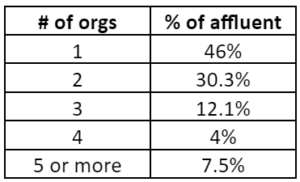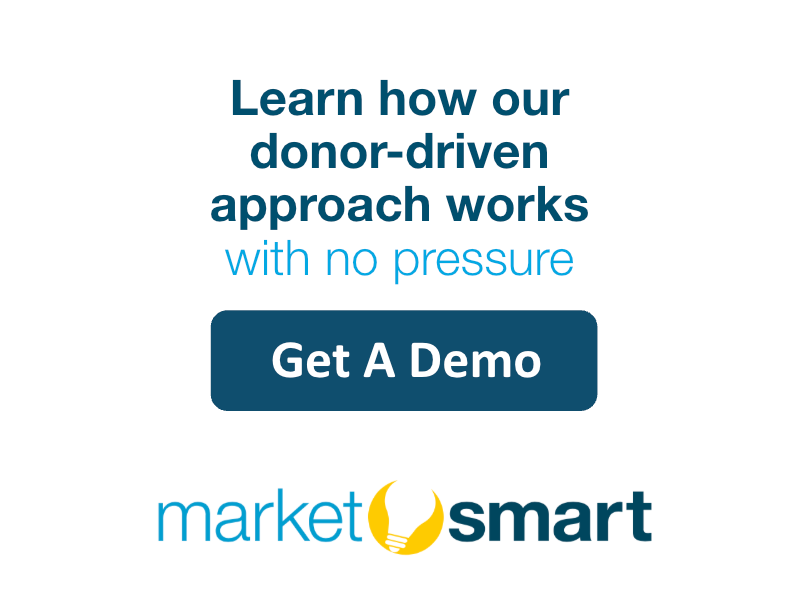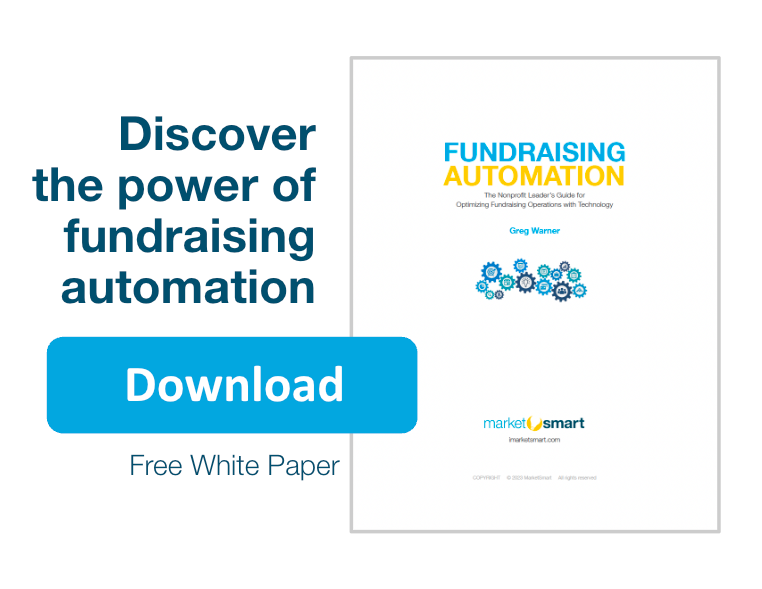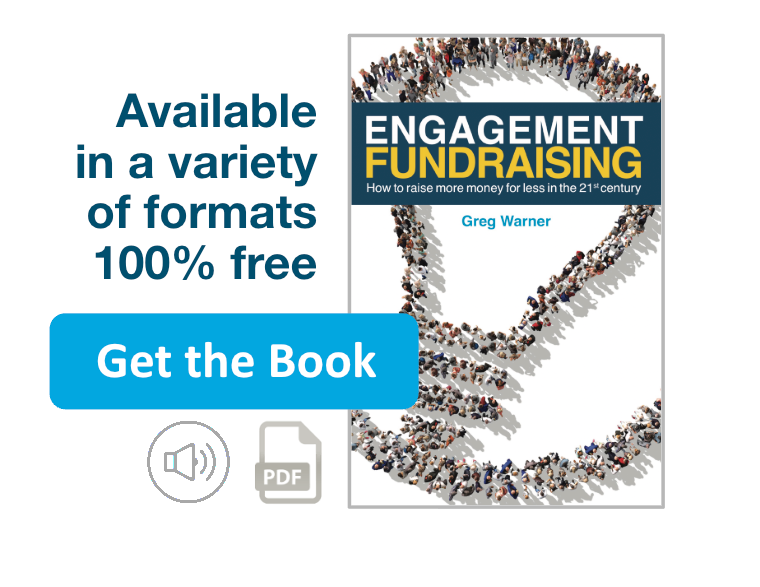The usual methods for identifying and qualifying major donors are costing your organization huge amounts of money if you are relying too much on them. Why? Because there are major donors hiding in plain sight, right under your nose, but they aren’t being added (assigned) to your gift officer caseloads because your RFM, wealth screening, AI, and other qualification strategies can’t see them.
You need a better way.
But before you can use a different approach for identifying and qualifying prospects, you need to realize how big a problem this is.
How many major donors are you overlooking, and why can’t the other methods of identification see them?
To help you see the problem, consider this question:
Who is more likely to give a major gift? A recurring donor giving $100 per month, or a long-term volunteer who has never donated?
All the donor identification methods that rely on quantitative data would pick the first one and overlook the second. And that could be a costly oversight and huge loss for your organization.
Example of Overlooked Major Donors – Volunteers
A study on affluent philanthropy conducted in 2016 looked at the volunteer and donation behavior of high-net-worth individuals. The study was conducted again a few years later during COVID, which therefore led to very different numbers. But the overall picture was consistent even though the numbers changed.
The 2016 study found that 49.7% of affluent people volunteer. The later study reported 30.4%. Even through covid, about a third of affluent people made it a priority to volunteer with at least one nonprofit organization.
The 2016 study found that 84.3% of these affluent volunteers also donate to the same organizations. It also found that they give 56% more than affluent donors who don’t volunteer.
Let’s unpack this a bit.
First of all, this means that about 16% of affluent volunteers haven’t yet donated. Will that change at some point? Depends on you and how well your organization engages them! Do you even know which of your volunteers have high net worth?
Second, your affluent volunteers will give more than your affluent donors who don’t volunteer. Reaching out to volunteers and learning their capacity and interest in making a gift – now or at some point in the future – should be part of your regular operation.
Overlooking Major Donors Who Volunteer at Multiple Organizations
Here’s a table showing how many organizations affluent donors volunteer with, from the same study:

We know from earlier that affluent people who volunteer almost all end up donating to the same organization. And we know they give more than affluent non-volunteers.
But consider these affluent people who volunteer at more than one organization. Will they donate to all of them? Will they donate the same amount to all of them?
What’s likely is, the more organizations an affluent person volunteers with, the more divergent their gift amounts will be to each one.
Think about someone who volunteers with five organizations. It’s easy to picture them making a huge gift to one or two of those, and then smaller gifts to the other three. What motivates this person to make such decisions? How much influence over those decisions do you have?
You have A LOT. But if you aren’t engaging them consistently so you know where they are in their donor journey, you won’t be positioned to benefit when they reach a point in life when they want to make some big gifts.
More Overlooked Potential Major Donors
As we say at MarketSmart, all donors are supporters. But not all supporters are donors – yet.
Potential major donors often get overlooked even though they are supporters of your mission, simply because they haven’t given yet. And that means they don’t show up on lists generated by traditional quantitative caseload-building tools like RFM and predictive analytics.
Consider these types of supporters:
Social media followers
Followers on social media who actively engage by viewing your posts, commenting, sharing, and liking your content clearly have some level of emotional attachment to your mission. They care. They may not be donating anything yet, but your mission matters to them.
Are you engaging them beyond social media in a personal way?
Email and print subscribers
Anyone who opts to receive emails from you cares enough about your mission to do so. People don’t subscribe by accident. Print newsletters often get sent to recurring or even one-time donors.
What are you doing to assess these subscribers for their potential to make a major gift?
Downloaders
Another source of overlooked potential major donors are those who request your specialized content. These people should also be in your email list, but it is a special segment, distinct from someone who simply filled out a form to “join our newsletter.”
These people joined because they wanted your special report, your eBook, your impact story, or whatever other content you offered. This includes people who attend webinars or request exclusive videos.
They want to know what’s going on. They want to learn something. But what else do they want? You don’t know if you aren’t reaching out to them consistently to gauge their interest and capacity for major giving.
Event participants
Event participants include event volunteers, guest speakers, and attendees who may or may not spend much money at their first event. Are you collecting contact information for your attendees? If so, what are you doing with it? Do they ever hear from you again? And if so – is it just your mass email newsletter?
Most people do not keep attending live fundraising events year after year. That’s why you need to capture and start using their email addresses.
Staff
Many people who work at nonprofits and institutions work there because they care deeply about the mission. They may or may not have capacity to make a major gift while working with you. But consider a person who works at your organization in their 20s, and then they go off and get a high-paying job in a new career.
But they still care about your mission. They still attend events. They volunteer now and then. Or, they don’t do any of those things. Either way – are you making it a priority to continue engaging with them? If one day they do acquire the capacity to make a major gift, will you be ready to reach out to meet with them? Are you still part of their life?
This is the job of major donor qualification:
Staying in touch with as many supporters as possible – regardless of whether they can make a major gift at the present time.
Advocates
Another group of supporters includes those who sign petitions, write letters to politicians and committees, and attend marches and protests.
Many of these people tend to be younger and they don’t have much money. But not all of them. And those young people won’t stay young forever. They will amass wealth over time, and some of them will become affluent.
Will you still be in touch with them twenty years later?
Supporters Now, Donors Later
The reason so many major donors get overlooked is because they weren’t major donors while they were actively involved with your organization. They were supporters who weren’t yet donating, or may have just donated small amounts now and then.
Consider a single 25-year old who is a recent college graduate, saddled with debt and with no generational wealth in her family. But she cares about your mission. She volunteers. She engages on social media. She invites people to events. She signs petitions.
Then, she gets married, has kids, starts her career, and moves on with life. She and her husband begin growing their wealth, but they spend most of it on their children and their future. But then, one day her husband’s parents pass away, and they leave them a million-dollar inheritance.
What will she want to do with that money?
All the quantitative, donation-data-focused strategies like propensity and wealth screening would have overlooked her as a major donor. But if you kept up your communication with her, knew she had a thriving career, knew her family situation, and continued engaging her as she progressed through life, you’d be in her life when she received this sudden inheritance.
How to Stay Engaged with Supporters at Scale
Reading all this, you might have started to wonder – how do you stay in touch with all these people in ways other than just an email newsletter or social media?
The answer is, you need a system that can interact and engage with individual supporters – for years if necessary – based on their level of engagement and what we call their digital body language. That refers to things like clicks, opens, requests, responses, and other forms of engagement through email.
We’re not talking about email newsletters. This type of system sends highly personal, text-only individual emails to specific people on your behalf. These will include updates, impact stories, surveys, information the supporter requests, and other methods of engagement that keep them within your circle of influence.
The surveys in particular are what allow you to know what’s going on in their lives, and to stay current on their level of interest and willingness to give, including planned giving.
This is what MarketSmart does.
Our system engages each supporter, tracks their digital body language, and informs you which supporters are ‘outreach-ready,’ meaning they want to discuss the possibility of making a major gift. It might take years. Decades even. But the timing doesn’t matter. What matters is that far fewer supporters will get overlooked, and you will win way more major gifts than you would have otherwise.
MarketSmart’s engagement fundraising system works so well that we guarantee all our customers a 10:1 return on investment. You will make at least ten times what you spend on our system.
We can offer that guarantee with confidence because we have seen it happen over and over again. Hear it from some of our customers in their own words.
To see how our system works, schedule a free demo of MarketSmart.
Related Resources:
- How to Help Your Wealthiest Supporters Solicit Themselves
- 4 Primal Motives for Major Gifts – the REAL Reasons People Make Transformational Gifts
- 5 Strategies for Turning Smaller Major Gifts into Larger Ones
- Why Volunteers Make Amazing Donors






Thank you for these wise words about volunteers! I was saying similar advice to a client of mine. I will be mentioning and providing a link to your DAF widget in one of my upcoming seminars. BRILLIANT!
Wonderful. Thanks so much Courtney.